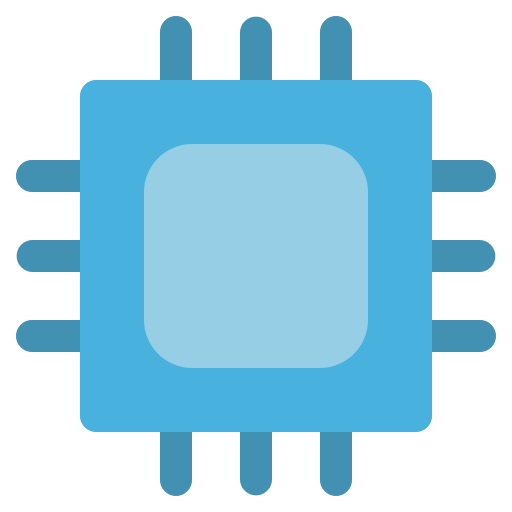deleted by creator
MHLoppy
Currently studying CS and some other stuff. Best known for previously being top 50 (OCE) in LoL, expert RoN modder, and creator of RoN:EE’s community patch (CBP). He/him.
(header photo by Brian Maffitt)
- 68 Posts
- 176 Comments

 4·3 days ago
4·3 days agoSorry, I forgot this was a thing with Wired articles (I don’t read regularly enough for it to usually be a problem) - I’ll add an archive link to the OP
Fwiw it looks like Cutipol is the brand and that Horne is just the retailer

 321·4 days ago
321·4 days agoI think you’ve tilted slightly too far towards cynicism here, though “it might not be as ‘fair’ as you think” is probably also still largely true for people that don’t look into it too hard. Part of my perspective is coming from this random video I watched not long ago which is basically an extended review of the Fairphone 5 that also looks at the “fair” aspect of things.
Misc points:
- In targeting Scope 2 emissions they went with renewables to get down to 0 Scope 2 emissions. (p13)
- In targeting Scope 3 emissions they rejigged their transportation a little (ocean freight instead of flying, it sounds like?) to reduce emissions there. (p14)
- In targeting Scope 3 emissions they used an unspecified level of renewable energy in late manufacturing with modest claimed emissions reductions. (p14)
- Retired some carbon credits, which, yes, are usually not as great as we would like, but still. (p14)
- They may have some impact by choice of supplier even when they don’t necessarily directly spend extra cash on e.g., higher worker payments.
- They may have some impact by engaging with suppliers. They provide small-scale examples of conducting worker satisfaction surveys via independent third party which seemed to provide some concrete improvements (p30) and “supporting” another supplier in “implementing best practices for a worker-management safety committee” (p30).
- They’re reducing exposure to hazardous chemicals in final assembly, and according to them they are “the first company to start eliminating CEPN’s second round priority chemicals” (p31). I don’t know much about this.
- With partners, they “organize school competitions in which children are educated about […] e-waste” (p40).
- They’re “building local recycling capacity” in Ghana by “collaborating” with recycling companies (p40).
- Extremely high repairability (with modest costs for replacement parts that make it financially sensible to repair instead of replace) keeps more phones in use, reducing all the bad parts of having to manufacture brand new phones.
- The ICs make up a huge portion of the environmental costs of the phone (both with the FP4 (pp 40-41) and with the FP5 (p10)), and Fairphone isn’t big enough to get behemoth chip manufacturers to change their processes (though apparently they’re lobbying Qualcomm for socketable designs, as unlikely as that is to happen any time soon). If you accept the premise that for around half of the phone they have almost no impact on in terms of the manufacturing side, it makes their efforts on the rest a bit better, I guess?
So yes, they are a long way from selling “100% fair” phones, but it seems like they’re inching the needle a bit more than your summary suggests, and that’s not nothing. It feels like you’ve skipped over lots of small-yet-positive things which are not simply “low economy of scale manufacturing” efforts.

 71·5 days ago
71·5 days agoUnfortunately it’s hard for the rest of us to tell if you actually think you want a video to save you from having to read 18 sentences or if you’re just taking the piss lol

 2·5 days ago
2·5 days agoWould love to see tests like this attempting to use DXVK etc (as part of their testing on Windows) to better isolate more factors
In the relatively short amount of time we’ve had with computers we’ve made pretty astounding progress though. If we had had a few million years to improve those silicon brains I think we’d give evolution a run for its money!

 5·8 days ago
5·8 days agoFor platforms that don’t accept those types of edits, the link OP tried to submit: https://www.theverge.com/news/690815/bill-gates-linus-torvalds-meeting-photo

 10·9 days ago
10·9 days agoChatGPT’d UNO was not on my bingo card

 3·9 days ago
3·9 days agoThere does seem to be an at least western-media-reportable level of known-prior-cannibalism amongst the current forces: https://www.bbc.com/audio/play/p0gvsjgz [it’s audio only, sorry - first reputable source I could find]
Whether they knew for the specific person in the current report or not, no idea
An empty stomach
Hungry for my beloved starch
Life in Latvia
Knock at door. “Who is?” “Free potato”. Open door. Is secret police.
This popular 2019 video talks about a “second person view” car chase in Driver San Fransisco where you control the fleeing car but view the game from a first person perspective of the chasing car: https://youtu.be/mC8QoRa8y_Q
We just sent the code
Somehow this phrase triggered a memory of this short comedy sketch: https://youtu.be/LButXcZ57pc
Tbh I thought it was a bunch of non-lemmy platforms (e.g., mbin which fedia.io runs - anecdotally it usually happens due to some types of edits not federating well), but if someone from infosec.pub (which runs lemmy) also had the problem then I’m actually not sure what the common factor is lol
edit: the common factor might just be instances that have blocked lemmy.ml, which currently includes fedia.io (my instance) and infosec.pub (the other commenter’s instance), though I’m surprised links to lemmy.ml’s hosted images are included in the block
Yes! It still maintains some features not in mainline Mastodon, which I guess is why infosec.exchange runs it
Image link for those on platforms that don’t see it (e.g., me): https://lemmy.ml/pictrs/image/745658dd-60ef-44f9-bcf9-290aa9f23573.webp
I know that part is, but specifically the front of your tongue tasting sweet is the weird tongue map thing that somehow made it into the education system
I assume you’re joking, but for those who got taught that in school but haven’t thought about it since, that thing is basically bs: https://en.wikipedia.org/wiki/Tongue_map



















An image from 2023 with the quality of one from the '00s lol